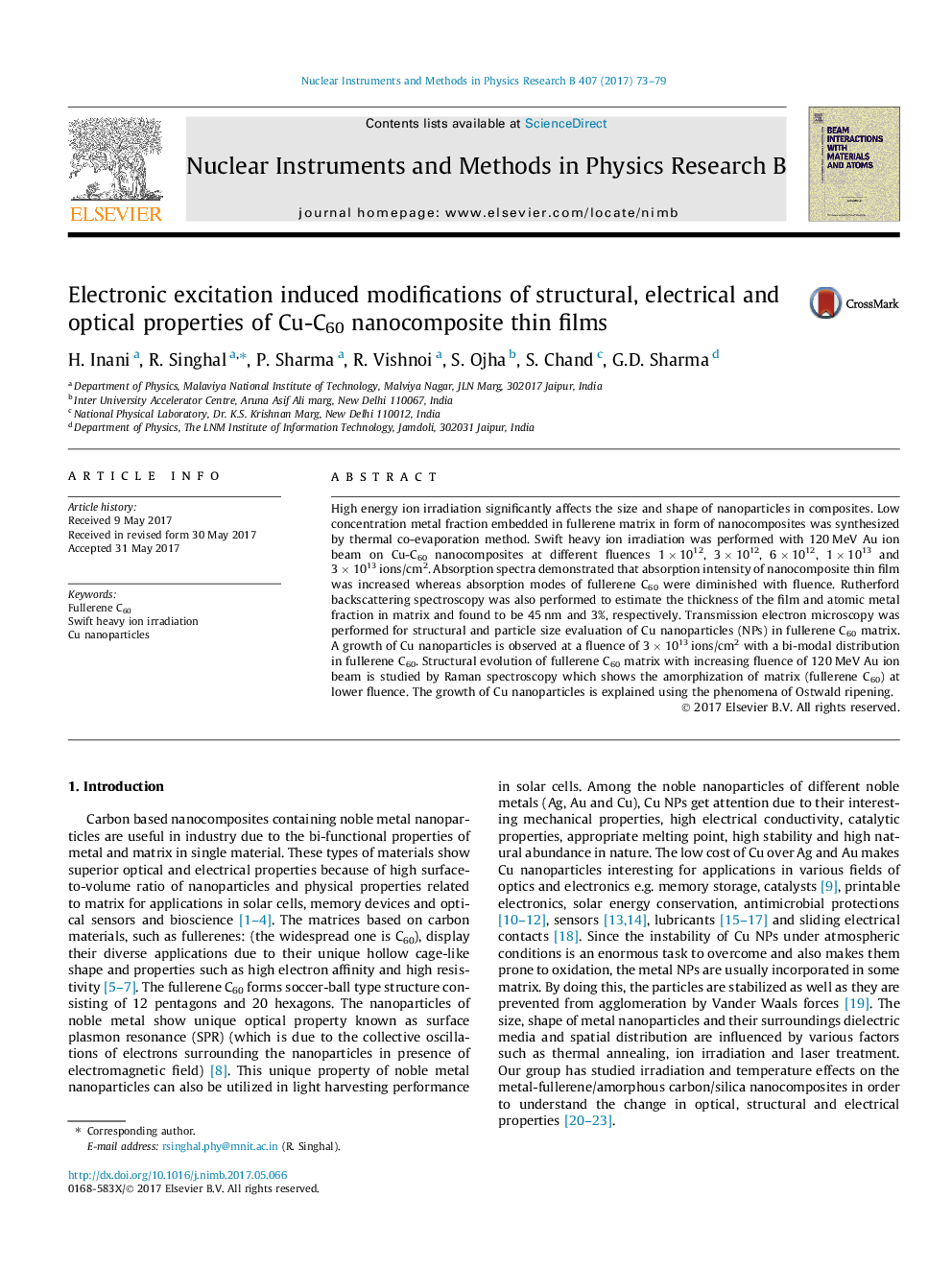| Article ID | Journal | Published Year | Pages | File Type |
|---|---|---|---|---|
| 5467511 | Nuclear Instruments and Methods in Physics Research Section B: Beam Interactions with Materials and Atoms | 2017 | 7 Pages |
Abstract
High energy ion irradiation significantly affects the size and shape of nanoparticles in composites. Low concentration metal fraction embedded in fullerene matrix in form of nanocomposites was synthesized by thermal co-evaporation method. Swift heavy ion irradiation was performed with 120Â MeV Au ion beam on Cu-C60 nanocomposites at different fluences 1Â ÃÂ 1012, 3Â ÃÂ 1012, 6Â ÃÂ 1012, 1Â ÃÂ 1013 and 3Â ÃÂ 1013Â ions/cm2. Absorption spectra demonstrated that absorption intensity of nanocomposite thin film was increased whereas absorption modes of fullerene C60 were diminished with fluence. Rutherford backscattering spectroscopy was also performed to estimate the thickness of the film and atomic metal fraction in matrix and found to be 45Â nm and 3%, respectively. Transmission electron microscopy was performed for structural and particle size evaluation of Cu nanoparticles (NPs) in fullerene C60 matrix. A growth of Cu nanoparticles is observed at a fluence of 3Â ÃÂ 1013Â ions/cm2 with a bi-modal distribution in fullerene C60. Structural evolution of fullerene C60 matrix with increasing fluence of 120Â MeV Au ion beam is studied by Raman spectroscopy which shows the amorphization of matrix (fullerene C60) at lower fluence. The growth of Cu nanoparticles is explained using the phenomena of Ostwald ripening.
Related Topics
Physical Sciences and Engineering
Materials Science
Surfaces, Coatings and Films
Authors
H. Inani, R. Singhal, P. Sharma, R. Vishnoi, S. Ojha, S. Chand, G.D. Sharma,
